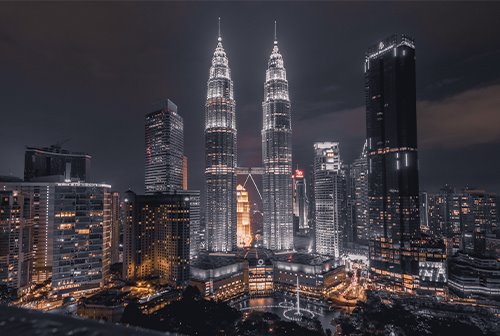
Malaysia's state-owned Petronas expects any recovery in oil demand to remain fragile and uncertain because of the continued impact of Covid-19, with it looking to hydrogen as a more resilient alternative to volatile oil and gas prices.
The path towards sustained oil demand recovery is uncertain because of the emergence of new Covid-19 variants that may trigger new restrictions, while accelerated energy transition will pose further challenges to its oil and gas business, the company said in its 2022-24 activity outlook report released yesterday.
The firm aims to achieve net zero carbon emissions by 2050 and plans to accelerate its strategy to step into renewables such as solar power and hydrogen.
The energy crisis in 2021 led to soaring gas and LNG prices, with Asian spot LNG prices rising to historic highs on factors such as higher demand from recovering economies, increased competition for gas between Europe and Asia, a hotter summer and colder winter and a coal crunch in China leading to a spike in gas demand, Petronas said.
The ANEA price, the Argus assessment for spot LNG deliveries to northeast Asia, for the front half-month hit an all-time high of $44.980/mn Btu for second-half January deliveries on 22 December.
"LNG spot prices in the coming years are also expected to experience volatility due to the weather pattern and also potential change in policy, altering the supply-demand dynamics," the company said. "While gas is cleaner than oil, challenges come in the form of methane leakages from operations and pipeline targeted by policymakers, following more stringent emission goals set at Cop 26" climate conference, it added.
Emerging potential
Hydrogen is emerging as an alternative with "great potential", Petronas said. The versatility of hydrogen as a fuel, heat source and feedstock means that it can be used in many sectors such as transport, industries and power generation. This meant demand for hydrogen is projected to increase by almost eightfold to 550mn t/yr compared with 70mn t in 2020, according to the firm's outlook.
"Hydrogen is forecasted to contribute up to 18pc of the global energy mix by 2050, eliminating 6 giga tonnes of CO2 annually and requiring a total investment of $11 trillion," said the firm, citing industry experts.
Petronas targets its domestic hydrogen projects to start operations from 2024, starting with blue hydrogen and subsequently green hydrogen production made using renewables with no emissions. But the cost of producing blue hydrogen is relatively high, with its emissions from using fossil fuels having to be captured and stored, with the firm having to decide how to move forward with its gas supplies. The firm said blue hydrogen offers a way to monetise the 1.5 trillion m³ of gas reserves it owns as part of a joint venture in Canada. But current LNG prices has left the company with the tricky decision of whether to convert the gas to LNG, where all their plants are ready, or to blue hydrogen.
The firm has also signed an initial agreement with ExxonMobil to assess the viability of carbon capture and storage (CCS) projects in peninsular Malaysia. "If we can crack the code in having a commercially viable CCS service, then it will also enable more production of blue hydrogen from Malaysia when we find more gas," said Petronas' hydrogen business head Adlan Ahmad.